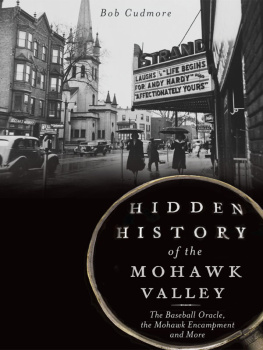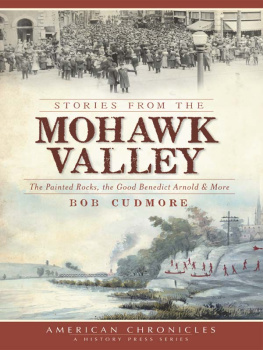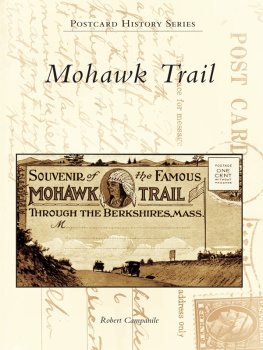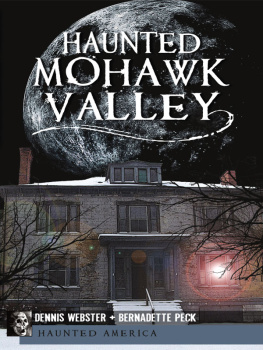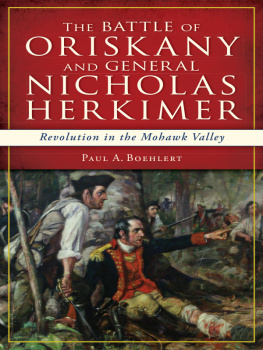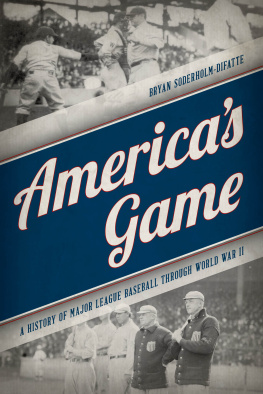

Published by The History Press
Charleston, SC 29403
www.historypress.net
Copyright 2013 by Bob Cudmore
All rights reserved
First published 2013
e-book edition 2013
ISBN 978.1.62584.576.4
Library of Congress Cataloging-in-Publication Data
Cudmore, Bob, 1945
Hidden history of the Mohawk Valley : the baseball oracle, the Mohawk encampment and more / Bob Cudmore.
pages cm. -- (Hidden history)
print edition ISBN 978-1-62619-121-1 (pbk.)
1. Mohawk River Valley (N.Y.)--History--Anecdotes. 2. Mohawk River Valley (N.Y.)--History, Local--Anecdotes. 3. Mohawk River Valley (N.Y.)--Biography--Anecdotes. I. Title.
F127.M55C83 2013
974.76--dc23
2013034751
Notice: The information in this book is true and complete to the best of our knowledge. It is offered without guarantee on the part of the author or The History Press. The author and The History Press disclaim all liability in connection with the use of this book.
All rights reserved. No part of this book may be reproduced or transmitted in any form whatsoever without prior written permission from the publisher except in the case of brief quotations embodied in critical articles and reviews.
In memory of Irv Deanreporter, columnist and conscientious editor
Contents
Preface and Acknowledgements
Kitchen Table History
Many of the tales in this book could be called kitchen table history. Stories such as the one about the baseball oracle or life in a local orphanage or how a great-uncle died in a plane crash are told to younger family members as the elders reminisce at the kitchen table.
And when somebody like me shows up to write things down, families frequently invite me to sit at the kitchen or dining room table to talk and look at old newspaper clippings and photographs.
Frances Burnham of Glenville showed me clippings about the 1928 death of her great-uncle and aviation pioneer Edward Pauley as we sat at her dining room table. His story in the book is Death Rode on the Wings of the Wind.
Burnham had wondered whether her great uncle would have wanted the story told. She asked her long-deceased relative to make her Christmas cactus bud if he wanted the story published in Bob Cudmores new book. The cactus had been passed down through four generations of Burnhams family.
After several requests, either the spirit of the aviator or the force of nature complied. The cactus produced a flower. More flowers popped out in following days. Burnham said, Doggone it. He did it.
Thanks to all the people who let me in on their family secrets for the new book, with or without the blessing of ancestral ghosts. Thanks also to the people who purchased more than 1,300 copies so far of my first History Press book, Stories from the Mohawk Valley.
The new book, Hidden History of the Mohawk Valley, takes you back to forgotten people and places: a sailor who cheated death when he went down with a stricken submarine; Camp Agaming in the Adirondacks, where a young Kirk Douglas was a counselor; and the 1957 Mohawk Indian encampment on the Schoharie Creek, visited by American man of letters Edmund Wilson.
The book also includes anthropologist John Colliers compelling photos chronicling life along the Mohawk River two months before America entered World War II.
ACKNOWLEDGEMENTS
Thanks to the late Irv Dean of the Daily Gazette. Irv edited my Gazette columns for more than twelve years, and his encouragement and suggestions meant a great deal to me. Thank you to John Cropley, who now has the task of preparing my columns for publication in the newspaper.
Audrey Sears provided much help as this book was being written, frequently suggesting questions that readers would want to know.
Jerry Snyder, president of Historic Amsterdam League, provided essential assistance in compiling photographs. Contemporary photos for the book were taken by Gerald Skrocki. Amsterdam city historian Robert von Hasseln and Bookhound proprietor and Upstream editor Dan Weaver were also helpful. Thanks to Montgomery County historian Kelly Farquhar, former Fulton County historian Peter Betz, former Montgomery County historian Jacqueline Murphy, Amsterdam World War II historian Robert N. Going, Alessa Wylie of Old Fort Johnson, Ann Peconie of the Walter Elwood Museum and many more.
A special tip of the cap to Old Peddlers Wagon proprietors Ed DiScenza and Ellen Benanto in Amsterdam for their retail support of my books.
HUGH DONLON AND JOHN DONLON
Although I never met him, I owe a great debt to Recorder reporter and historian Hugh Donlon. His book Annals of a Mill Town on Amsterdam, New York history is frequently quoted in these pages.

From a Mohawk Carpet publication, the Mohawk Courier, April 1925. The hills in the town of Florida provide impressive views of the Mohawk Valley. Tom Pikul.
Should personal credentials for assuming appraisal responsibilities be required or even be of interest, it may be cited that few Amsterdamians of today have lived here longer and have been closer to mainstream activities, Hugh Donlon wrote in his book. Donlon was born in 1896. He retired from the Recorder in 1971, his history book was published in 1980 and he died at age ninety-three in 1989.
He continued, Decades of newswriting, largely about government at city and county levels, included nearly 15 years of gossip mongering through the Main Street column, a daily literary grind that at times was about as painful to the columnist as to townspeople roasted in caricature. There are easier ways of earning a living, but none better than reporting in getting to know people.
It has been a pleasure over the last several years exchanging e-mails with Hugh Donlons son John Donlon. According to a childhood friend, John Donlon sang tenor in a barbershop-style singing group that could be heard in occasionally raffish song under Guy Park Avenues streetlights. He graduated from the U.S. Naval Academy in 1949 and became a nuclear submariner. He commanded the USS Shark in 1963 and later the USS Woodrow Wilson. Today he lives in Connecticut.
He and his wife and family moved twenty-six times during his navy career, living up to a family rule, Never fail to stay together (kids and all) on home plate (wherever it might be) unless expressly forbidden by direct order of competent authority. Good rule!
PART I
People We Remember
Chapter 1
The Weather Prophet
Cousin George Henry Casabonne was a stonemason, farmer and factory worker who was famous for his long-range Mohawk Valley weather forecasts. Born in Northville in 1886, Cousin George used lunar phases, the size and prevalence of woolly bear caterpillars and his own weather records when he created his seasonal forecasts. Casabonne said he based his predictions on the sign of the moon like the Indians did.
Historian Hugh Donlon wrote, Like Houdini and other professional escapists, weather prophets always had a way of getting out of tight places.

Weather prophet Cousin George Casabonne with fiddle and tulip.
Next page
